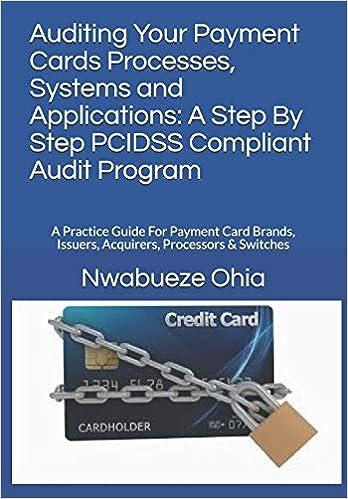Question
Transaction Assets = Liabilities + Equity Beginning $0 = $0 + $0 Investment in the Business The company issue stock in exchange for $25,000 cash.
| Transaction | Assets | = | Liabilities | + | Equity |
| Beginning | $0 | = | $0 | + | $0 |
| Investment in the Business The company issue stock in exchange for $25,000 cash. This increases the assets of the business from its zero balance. The owners (stockholders) have a claim on the assets, so equity also increases from its zero balance. Make sure the equation stays in balance. | $ | = | $ | + | $ |
| Borrow Cash The company borrows $12,500 cash from the local bank. This increases the assets from its balance after the first transaction. The company now owes the bank; therefore, the bank also has a claim on the assets. Thus, liabilities increase from their zero balance. Notice this transaction did not affect equity. The equation still needs to balance. | $ | = | $ | + | $ |
| Purchase equipment The company pays cash for a piece of equipment costing $9,500. Make sure that the equation stays in balance. Remember, the left side of the equation summarizes the total assets. The company has merely exchanged one asset (cash) for another asset (equipment); the value of each asset is the same. | $ | = | $ | + | $ |
Jones Company: Analyze the accounting equation for another business, Jones Company. Assume that the assets are $66,000 and the liabilities are $26,400. By rearranging the accounting equation, you determine that equity is $ .
During the year, the company issued additional stock for $4,000. The company also paid off $2,500 of its debt. What would the accounting equation look like at the end of the year for Jones Company? Enter the updated amounts for Jones' accounting equation below.
| Assets | = | Liabilities | + | Equity |
| $ | = | $ | + | $ |
Show All Feedback
APPLYING THE CONCEPTS: Analyzing the Effect of Revenues and Expenses
The equity component of the accounting equation can be affected by more than owner contributions. In any form of business, the owners take all revenues and expenses. Therefore, equity increases for revenue earned and decreases for expenses incurred. Also in any form of business, money can be distributed from the business to the owners. Distributions (in the form of cash or other assets) to the owners (stockholders) decrease the equity account. Smith Company had transactions affecting equity during the past year. The table below demonstrates the effect of these transactions for Smith Company. Review the details of each transaction and determine the effect on the accounting equation. Then, enter the updated amounts for the assets, liabilities, and equity accounts (do not record the the transaction). Enter all amounts as positive numbers.
| Transaction | Assets | = | Liabilities | + | Equity |
| Beginning of the year | $350,000 | = | $105,000 | + | $245,000 |
| Revenues earned: During the year, Smith Company earned revenues totalling $210,000. The cash has been collected from the customers for all revenue earned this year. | $ | = | $ | + | $ |
| Expenses incurred: Smith Company incurred expenses totalling $147,000 during that same year. All of the expenses incurred this year were paid in cash. | $ | = | $ | + | $ |
| Distributions: At the end of each quarter, the company paid dividends to the stockholders. The sum of those quarterly dividends was $6,300. | $ | = | $ | + | $ |
Show All Feedback
APPLYING THE CONCEPTS: Putting it all together
Lets put all the pieces together now. Suppose that you are analyzing Martin Company. You know that at the beginning of the year, the assets equaled $350,000 and the liabilities equaled $192,500. During the year, assets increased by $52,500 and equity increased by $81,375. The change in equity includes all increases and decreases. Further analysis reveals that the changes in equity were caused by revenues of $244,125 and expenses totaling $122,850 during the year. Because of your understanding of the accounting equation, you realize that distributions (dividends) to the stockholders must have also occurred during the year. However, you must determine the amount for those distributions.
What is the amount of distributions made to the owner of Martin Company during the year? $
Step by Step Solution
There are 3 Steps involved in it
Step: 1

Get Instant Access to Expert-Tailored Solutions
See step-by-step solutions with expert insights and AI powered tools for academic success
Step: 2

Step: 3

Ace Your Homework with AI
Get the answers you need in no time with our AI-driven, step-by-step assistance
Get Started


